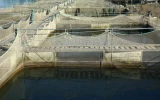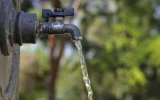The Most Common Pond Types for Fish Farming Explained
When getting started with fish farming, most fish farmers get confused about which type of pond to construct. The catch, however, is to choose a pond type with a high-quality design that can support the growth of fish and make monitoring them an easy task. Let’s look at the most common pond types for fish farming below to see which one gives you the most advantage.
The most common pond types used in fish farming are earthen ponds, concrete ponds, tarpaulin ponds, plastic or rubber ponds, fiberglass ponds, and cage system ponds. Before constructing, you must first consider the pond's suitability to the location of your farm, the total costs, and the quality of the pond.
At the end of this article, you will learn about the advantages and disadvantages of each pond type, which may help you decide which of these types suits your needs best, whether you are a beginner or already an expert in fish farming.
Summary
- Constructing a pond is the first step in starting a fish farm. A well-constructed pond ensures the success of any fish farming business.
- The most common types of ponds used in fish farming are earthen ponds, concrete ponds, tarpaulin ponds, plastic or rubber ponds, fiberglass ponds, and caged ponds.
- When choosing the most suitable type of pond to construct for your fish farm, consider the budget constraints, the location of your fish farm, and the quality of the pond.
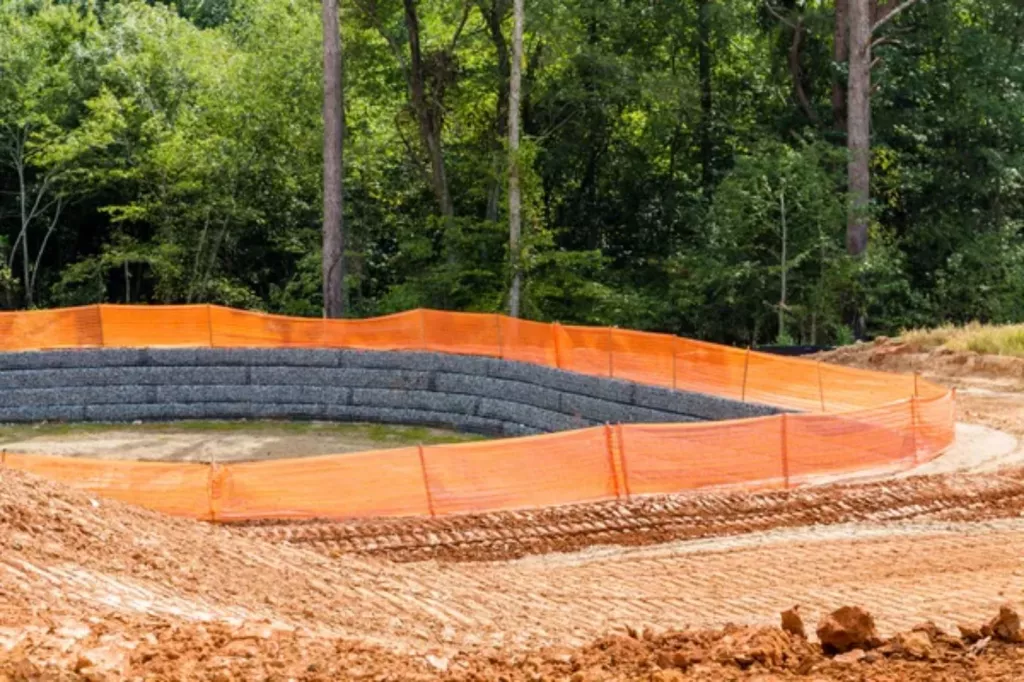
Most Common Types of Ponds for Fish Farming
Most fish farms use ponds to hold water and allow the rearing of fish. While the specific fish species and the water source are important tools to be successful in fish farming, the same is true when constructing fishponds. Constructing a pond in a suitable location is the first step in starting a fish farm.
A good quality pond must be inexpensive, allow easy maintenance of fish, and be highly efficient in maintaining good water quality. Since a pond is an artificial structure that mimics the design of the natural ecosystem of fish, it is important that the type of pond you choose to construct can provide these qualities.
Below, we have rounded up the most common types of ponds used in fish farming, as well as the disadvantages and advantages of each.
1. An earthen pond is the most used type of pond for fish farming
An earthen pond provides the nearest alternative to natural water where fish can be raised. It is created by digging a hole at least 1.5 meters deep to create an artificial dam or reservoir. Before constructing an earthen pond, you must consider two important things: location and soil type.
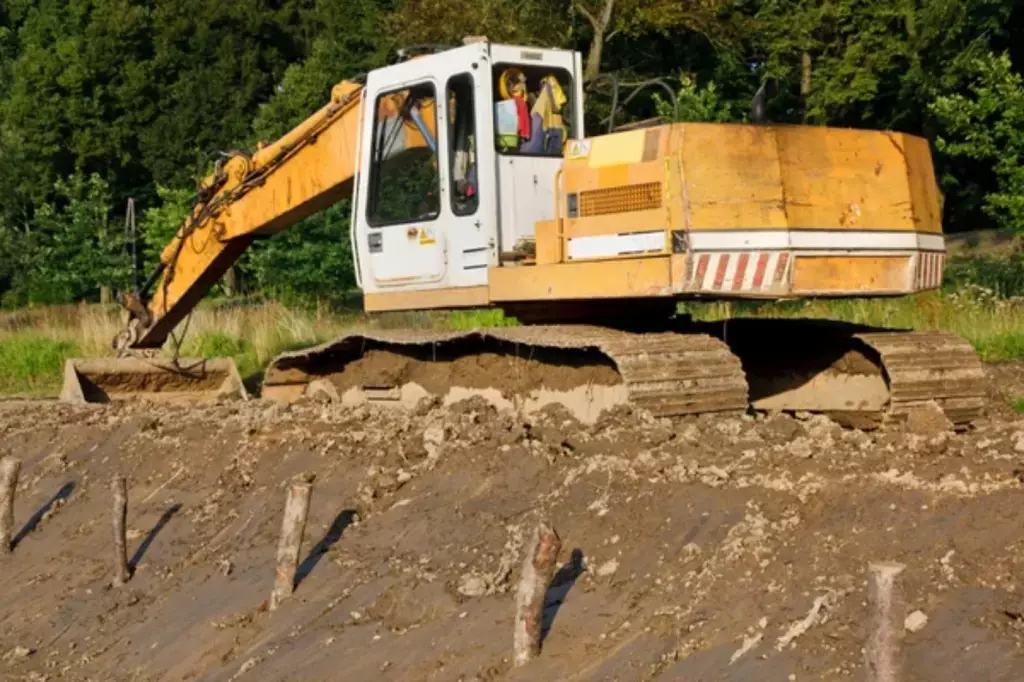
The land must be in a place near a natural water source. Second, the best types of soil to be used for an earthen pond are either clay soil or sandy clay soil.
| Advantages of Using an Earthen Pond | Disadvantages of Using an Earthen Pond |
|---|---|
| Low maintenance cost | Requires a large space to construct |
| Water is easy to manage | Difficult to tell the conditions of the fish |
| Allows faster fish growth | Fish may tend to cannibalize |
| Provides the most near-natural type of ecosystem for the fish | Risky to control in case of flood |
2. A concrete pond is the second type of pond commonly used to raise fish
A concrete pond, as the name suggests, uses a mixture of concrete blocks, sand, and cement to construct a fishpond where you can raise fish. When constructing concrete ponds, expert help must be sought.
Any mistake during the construction of a concrete pond may result in leakages which cost more than constructing a new one. The table below summarizes the pros and cons of using this type of pond.
| Advantages of Using a Concrete Pond | Disadvantages of Using a Concrete Pond |
|---|---|
| Can be constructed anywhere on the land | Cost of construction and maintenance is expensive |
| Allows easy managing of fingerlings and juvenile fish | Requires large volumes of water to successfully run |
| Unaffected by flood | May be environmentally challenging if proper wastewater disposal is not practiced |
| Water system can be easily managed | |
| Fish diseases can be tracked and controlled with ease | |
| Lasts longer than any type of pond |
3. A tarpaulin pond can be used in place of an earthen or concrete pond to raise fish
A tarpaulin pond is made up of wood or galvanized pipes covered with a tarpaulin. The tarpaulin can be of different sizes or colors. This type of pond must be set up in obstacle-free spaces to avoid tearing the tarpaulin.
| Advantages of Using a Tarpaulin Pond | Disadvantages of Using a Tarpaulin Pond |
|---|---|
| Construction is cost-effective | Cannot be used for large-scale fish farms because it is costly |
| Setup and design are easy | Its flexibility causes it to be easily torn either via heavy wind, rain, storm, or flood |
| Setup is movable and does not require lots of space | Can be easily disassembled |
4. Plastic or rubber pond is commonly used by beginners in fish farming
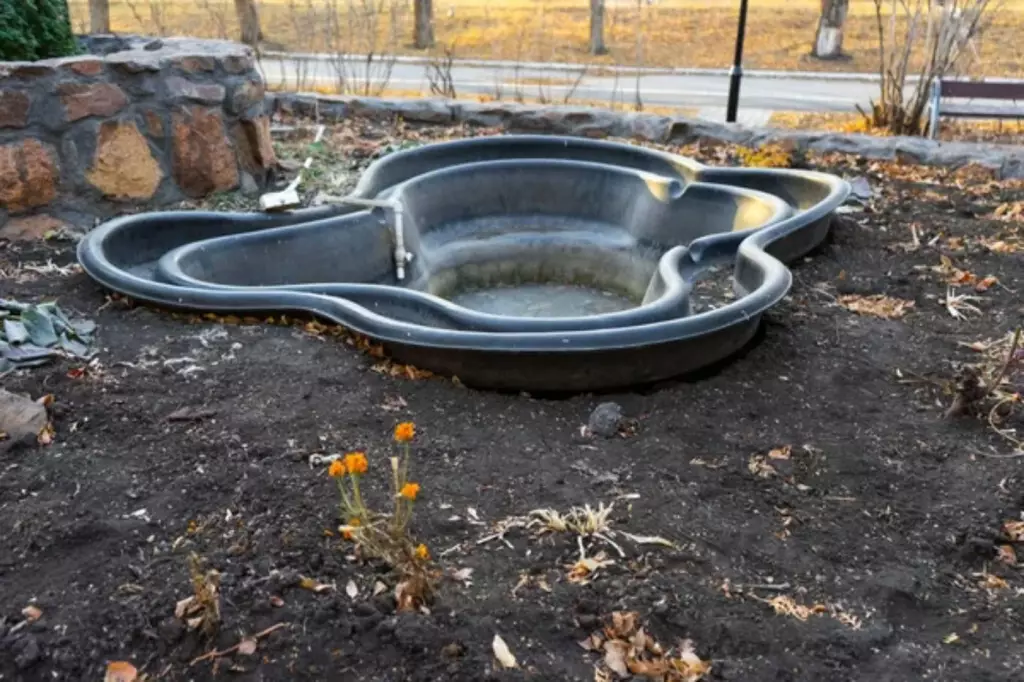
Plastic ponds are just like tarpaulin ponds, except that plastics are used instead of tarpaulins. This type of pond is commonly used by beginners in fish farming. Some of the positive and negative impacts of using this type of pond are the following:
| Advantages of Using Plastic Ponds | Disadvantages of Using Plastic Ponds |
|---|---|
| Only requires minimal space | Can be costly if you have plans of upsizing |
| Movable and easy to maintain | The durability of the plastic can easily be affected when exposed to sunlight for too long |
| Cost-effective | |
| Can be used for indoor fish farming | |
| Suitable when raising hatchlings or fingerlings |
5. Fiberglass tanks or ponds are another most used type of pond for fish farms
Fiberglass pond is another good choice for fish farm ponds. Unlike plastics, fiberglass is not prone to cracking. It does not need to be surrounded with compacted sand or soil to take shape. It does not require digging a hole because it can be placed as is directly on the ground – covering it with plants, rocks, and other landscape materials to accentuate it.
| Advantages of Using Fiberglass Ponds | Disadvantages of Using Fiberglass Ponds |
|---|---|
| Easy installation | Although less prone to cracking compared to plastics, the liner is still breakable |
| Movable | Very expensive |
| There are types of transparent fiberglass that allow easy observation of your fish | Design is too shallow to be able to control temperature |
6. Caged ponds provide another way of raising fish in an enclosed net cage pond
Cage ponds, commonly used in cage aquaculture, allow the rearing of fish in an existing water source such as a reservoir, river, lake, or sea, while they are enclosed in a net cage where water flows freely.

Caged ponds are composed of a floating frame, net materials, and a mooring system with a floating net that holds and allows the rearing of several fish. Some pros and cons of using this pond system are listed below.
| Advantages of Using Caged Ponds | Disadvantages of Using Caged Ponds |
|---|---|
| Low impact practice with high returns | Have higher tendencies of being affected by water pollution |
| Reduced carbon emission activity | Requires tight security to succeed |
| Fish need less adjustment as they are raised in their natural habitat, and they grow faster | Prone to poaching incidents |
| Allows large-scale fish farm operations since the space is large enough to hold plenty of fish |
Tips to Maintain Your Fishpond
When you have selected the type of pond that you want to construct for your fish farm, you must now learn how to maintain it. After all, maintaining the pond is what matters to be able to succeed in fish farming.
Some of the most basic tips to maintain your pond are the following:
- Monitoring water quality by running a few water tests regularly
- Regular pond cleaning to keep it free of debris and dried vegetation
- While you can leave it as is, it’s recommended to remove any dead fish immediately to avoid attracting predators and insects
- Monitor the health of your fish and quarantine any fish that you want to add in the future
- Ensure that the temperature for the specific types of fish you are raising is maintained

